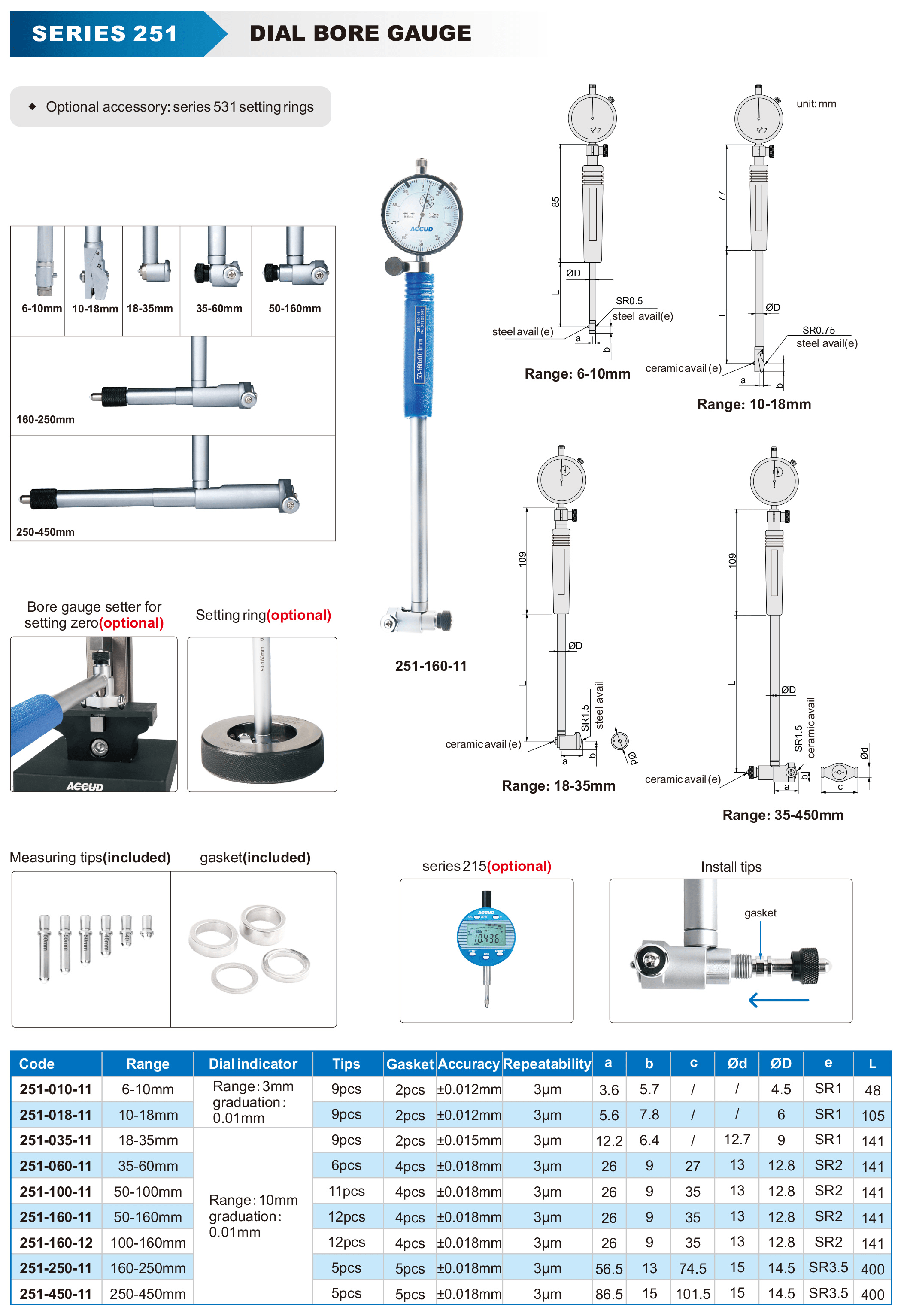DIAL BORE GAUGE 18-35MM 0.015MM ACC. 0.001MM GRAD.
SERIES 251 -11
A dial bore gauge is a precision instrument used to measure the internal diameter of holes, cylinders, or bores with high accuracy. It consists of a measuring head with adjustable anvils and a dial indicator that displays the measurement. Dial bore gauges are commonly used in machining, automotive, and industrial applications to ensure that bored holes meet specific dimensional tolerances.
Use with optional bore gauge setter for setting zero or a Setting Ring
- Manufacturer Cat No: 251-035-11
- Dial Indicator: Range: 10mm and Graduation: 0.01mm
- Range: 18mm - 35mm
- Accuracy: ±0.015mm
- Repeatability: 3µm
- Shaft (rod) length (L): 141mm
- Included: 9 tips and 2 gaskets
Applications
- Machining: Used to verify the internal dimensions of bored holes during and after the machining process.
- Automotive Industry: Essential for checking the diameter of engine cylinders, bearing bores, and other critical components to ensure they meet specification.
- Quality Control: Employed in quality control processes to inspect and verify that parts and assemblies meet design tolerances.
- Aerospace: Used to ensure the precision of components where tight tolerances are critical for safety and performance.
In summary, a dial bore gauge is an indispensable tool for anyone needing to measure internal diameters with high precision. Its mechanical design, combined with a dial indicator, offers a reliable and accurate method for verifying bore sizes in various industrial and engineering applications.
Features at a glance
- Manufacturer Cat No: 251-035-11
- Dial Indicator: Range: 10mm and Graduation: 0.01mm
- Range: 18mm - 35mm
- Accuracy: ±0.015mm
- Repeatability: 3µm
- Shaft (rod) length (L): 141mm
- Included: 9 tips and 2 gaskets
Advantages of a Dial Bore Gauge
- High Precision: Provides highly accurate internal diameter measurements, essential in precision engineering.
- Ease of Use: The dial indicator allows for easy and quick reading of measurements, reducing the likelihood of errors.
- Durability: Dial bore gauges are robust and can withstand regular use in industrial environments.
- Versatility: With interchangeable anvils and spacers, a single dial bore gauge can measure a wide range of bore sizes.
Technical Specifications

Usage Procedure
- Preparation: Select the appropriate anvils and spacers for the bore size you intend to measure. Attach them to the measuring head and ensure the dial indicator is zeroed using a master gauge or standard.
- Insert the Gauge: Insert the bore gauge into the bore or hole to be measured. Ensure that the anvils are fully inside the bore.
- Center the Gauge: Gently rock the bore gauge back and forth within the bore to ensure the anvils are aligned and the gauge is centered.
- Read the Dial: Observe the needle's movement on the dial indicator. The smallest reading, which occurs when the gauge is perfectly aligned and centered, represents the bore's diameter.
- Compare with Specification: Compare the reading against the required tolerance to determine if the bore is within specification.

